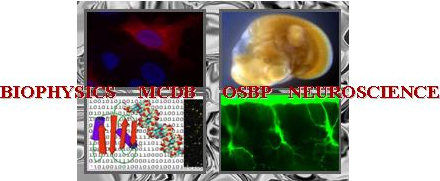Interdisciplinary Graduate Programs Symposium

2013 OSU Molecular Life Sciences
Interdisciplinary Graduate Programs Symposium

Talk abstracts
Abstract:
The acquisition of flight contributed to the success of insects and winged forms are present in most orders. Key to understanding the origin of wings will be knowledge of the earliest postembryonic events promoting wing outgrowth. The Drosophila melanogaster wing is intensely studied as a model appendage, and yet little is known about the beginning of wing outgrowth. Vein (Vn) is a neuregulin-like ligand for the EGF receptor (Egfr), which is necessary for global development of the early Drosophila wing disc. vn is not expressed in the embryonic wing primordium and thus has to be induced de novo in the nascent larval wing disc. In recently published work, we found that Decapentaplegic (Dpp), a Bone Morphogenetic Protein (BMP) family member, provides the instructive signal for initiating vn expression. The signaling involves paracrine communication between two epithelia in the early disc. I found that this unidirectional inductive signal is transduced to the vn cis-regulatory region by Drosophila Smad homolog, Mad. By mutating the Mad sites in a vn-reporter gene, I was able to show that Dpp signaling directly induces vn expression. Once initiated, vn expression is amplified and maintained by autocrine signaling mediated by the E-twenty six (ETS)-factor PointedP2 (PntP2). But, this self-propagating Vn-EGFR-PntP2 feedback loop is limited to the dorsal region. By analyzing the expression of PntP2 in developing wing discs, I was able to show that this is, in part, due to retraction of PntP2 to the dorsal region. This interplay of paracrine and autocrine signaling underlies the spatial and temporal pattern of induction of Vn/Egfr target genes and explains both body wall development and wing outgrowth. It is possible this gene regulatory network governing expression of an EGF ligand is conserved and reflects a common origin of insect wings.
References:
1. Paul, L. et al. Dpp-induced Egfr signaling triggers postembryonic wing development in Drosophila. Proc Natl Acad Sci U S A 110, 5058-63.
2. Schnepp, B., Grumbling, G., Donaldson, T. & Simcox, A. Vein is a novel component in the Drosophila epidermal growth factor receptor pathway with similarity to the neuregulins. Genes Dev 10, 2302-13 (1996).
3. Weiss, A. et al. A conserved activation element in BMP signaling during Drosophila development. Nat Struct Mol Biol 17, 69-76.
4. Wessells, R.J., Grumbling, G., Donaldson, T., Wang, S.H. & Simcox, A. Tissue-specific regulation of vein/EGF receptor signaling in Drosophila. Dev Biol 216, 243-59 (1999).
Keywords: Gene regulatory network, Drosophila Wing development, EGFR, Wnt, TGF-Beta